#more significant than the renaissance
Explore tagged Tumblr posts
Text
in my personal opinion the chuck e cheese spinel x starbucks employee volleyball (pink pearl) au was the most moving and culturally significant piece of steven universe fan content i’ve ever had the honor of consuming
#steven universe#spinel#volleyball su#spinel x pink pearl#literally life altering#more significant than the renaissance
22 notes
·
View notes
Text
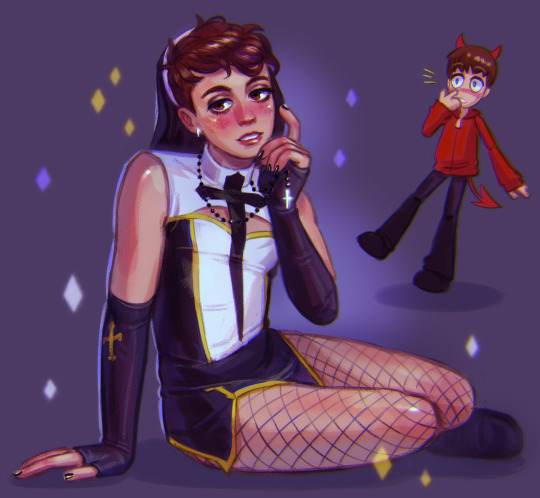
guys i don't think this nun is going to heaven
#this was more culturally significant than renaissance#we're in post sister daniel universe rn#dan and phil#sister daniel#daniel howell#phil lester#amazing phil#amazingphil#danisnotonfire#phan#dnp#dan and phil games#fanart#digital art
1K notes
·
View notes
Text
UH…!!
issa cash race you in last place!
youtube

#THIS SONG ALONE IS MORE CULTURALLY SIGNIFICANT THAN THE FRENCH RENAISSANCE#afraid she'll nvr top it#tinashe#songs for you#cash race#Youtube
8 notes
·
View notes
Text
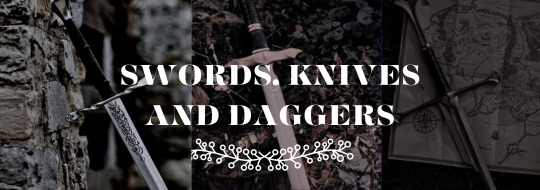
Writing Weapons (2): Knives and Daggers
Dagger vs. Sword
In many situations, daggers might be more plausible than a sword fight.
Dagger are eaiser to carry and conceal, lighter, faster, good for spontaneous action, suicide bids, self-defense and assassination.
Dagger vs. Knife
No clear distinction; terms used interchangeably
Dagger is more for thrusting with 2 sharp edges
Knife is more for cutting (slashing) with 1 sharp edge
Concealment
Carried in a leather sheath on the belt
Can be concealed under a cloak, in a bodice (sheath sewn into the bodice), in a boot, behind hari ornaments
Bodice daggers (popular in the Renaissance) had no cross guards.
Connotations
Beside its combat value, the dagger has lots of emotional and sexual symbolisms.
The closeness need to attack with a dagger creates intense personal connection. They are often used in fights where emotions are running high: gang warfare, hate crime, vengeance.
Due to its shape and the fact that it's usually worn on a belt made it a symbol of virility in many cultures and periods.
Sometimes it was the hilt rather than the blade: like in the case of bollocks daggers with two...balls on either side of the hilt.
Fighting Techniques
Stabbing:-
The dagger with long, thin blades are made to stab a vital organ like the kidneys, liver, bowel, stomach or heart.
Stabbing directly at the chest seldom works, since the blde may glance off the ribs. Position the dagger below the ribcage and drive it upwards, through the diaphragm and into the lungs. If the sword is long enough and your fighter is a professional, you can get to the heart.
If no professional, just keep going for the stomach and you'll get one of the vital organs eventually.
Slashing:-
When describing a slash wound, show a lot of blood streaming, or even spurting.
Slashing dagger fights are bloody - show your MC's hands getting slick with blood, grip on the weapon slipping.
The aim is to cut the opponent's throat or cut tendoms, muscles, or ligaments to disable. Slashing the muscles in the weapon-wielding arm is the most effective; insides of the writst or back of the knee is also critical.
Assassinations:-
Show good knowledge of the humna antatomy
Use a stabbing dagger
A single, determined, calculated and efficient stroke, probably below the ribs.
Self-Defense:-
Disable the attacker by slashing their weapon-wielding hand (elbow or wrist)
Quick, multiple stabs wherever the MC can get the blade to land; the attacker won't give time for careful positioning
If the blade is too short to do any significant damage, maek up for this by stabbing so ast that the pain and blood loss distracts the opponent.
Vegeance and Hatred:-
Someone who is motivated by raging emotions will stab the victim repeatedly, even after he is already dead.
The attacker may stab or salsh the victim's face, disfiguring it.
Contemporary street fights and gang warfare usually involves these.
Duels:-
If both fighters are armed with daggers, include wrestling-type moves as they try to restrict each other's weapon hand.
Show them trying to disable each other by slashing insides of writes, elbows, the back of the knees, etc.
Dagger + Sword
If the character is expecting a fight, they can hold a sword in their right hand, and a dagger in their left to fight with both
Sword + mace combination also common.
Blunders to Avoid:
Direct stabbing at the chest wouldn't work.
Hero cannot cut his bread with a stabbing sword
adapted from <Writer's Craft> by Rayne Hall
#writing#writers and poets#writers on tumblr#helping writers#creative writing#writeblr#let's write#poets and writers#creative writers#resources for writers#dagger#fight scene#description#action scene#writer#write#fantasy#medieval fantasy#high fantasy#fantasy world#writer on tumblr#ao3 writer#writer problems#writer stuff#writer community#writer things#author#writing practice#writing prompt#writing inspiration
1K notes
·
View notes
Text
You see a lot more post apocalyptic stories set in the US or Canada or Australia than you do in the old world, and I’m going to go out on a completely unsupported limb and argue that that’s because part of what the genre is doing is allowing us to imagine an almost historicizing vision of these modern countries: there never was a feudal or renaissance United States. There were no nomadic conquerors in Australia. The prior history of these places was radically different from the contemporary periods in the old world and the eradication of native cultures allows popular culture to imagine that prior history as being a long, quiescent void, so the desire to tell stories in an archaizing version of modern North America causes people to reach forward past a posited apocalypse. Versus in Europe or China or India where you can just set stories in a historical period.
That’s not the only urge that postapocalyptic stories appeal to but I think it’s a significant one.
282 notes
·
View notes
Text
Academic economists get big payouts when they help monopolists beat antitrust

After 40 years of rampant corporate crime, there's a new sheriff in town: Jonathan Kanter was appointed by Biden to run the DOJ Antitrust Divisoon, and he's overseen 170 "significant antitrust actions" in the past 2.5 years, culminating in a court case where Google was ruled to be an illegal monopolist:
https://pluralistic.net/2024/08/07/revealed-preferences/#extinguish-v-improve
Kanter's work is both extraordinary and par for the course. As Kanter said in a recent keynote for the Fordham Law Competition Law Institute’s 51st Annual Conference on International Antitrust Law and Policy, we're witnessing an epochal, global resurgence of antitrust:
https://www.justice.gov/opa/speech/assistant-attorney-general-jonathan-kanter-delivers-remarks-fordham-competition-law-0
Kanter's incredible enforcement track record isn't just part of a national trend – his colleagues in the FTC, CFPB and other agencies have also been pursuing an antitrust agenda not seen in generations – but also a worldwide trend. Antitrust enforcers in Canada, the UK, the EU, South Korea, Australia, Japan and even China are all taking aim at smashing corporate monopolies. Not only are they racking up impressive victories against these giant corporations, they're stealing the companies' swagger. After all, the point of enforcement isn't just to punish wrongdoing, but also to deter wrongdoing by others.
Until recently, companies hurled themselves into illegal schemes (mergers, predatory pricing, tying, refusals to deal, etc) without fear or hesitation. Now, many of these habitual offenders are breaking the habit, giving up before they've even tried. Take Wiz, a startup that turned down Google's record-shattering $23b buyout offer, understanding that the attempt would draw more antitrust scrutiny than it was worth:
https://finance.yahoo.com/news/wiz-turns-down-23-billion-022926296.html
As welcome as this antitrust renaissance is, it prompts an important question: why didn't we enforce antitrust law for the 40 years between Reagan and Biden?
That's what Kanter addresses the majority of his remarks to. The short answer is: crooked academic economists took bribes from monopolists and would-be monopolists to falsify their research on the impacts of monopolists, and made millions (literally – one guy made over $100m at this) testifying that monopolies were good and efficient.
After all, governments aren't just there to enforce rules – they have to make the rules first, and do to that, they need to understand how the world works, so they can understand how to fix the places where it's broken. That's where experts come in, filling regulators' dockets and juries' ears with truthful, factual testimony about their research. Experts can still be wrong, of course, but when the system works well, they're only wrong by accident.
The system doesn't work well. Back in the 1950s, the tobacco industry was threatened by the growing scientific consensus that smoking caused cancer. Industry scientists confirmed this finding. In response, the industry paid statisticians, doctors and scientists to produce deceptive research reports and testimony about the tobacco/cancer link.
The point of this work wasn't necessarily to convince people that tobacco was safe – rather, it was to create the sense that the safety of tobacco was a fundamentally unanswerable question. "Experts disagree," and you're not qualified to figure out who's right and who's wrong, so just stop trying to figure it out and light up.
In other words, Big Tobacco's cancer denial playbook wasn't so much an attack on "the truth" as it was an attack on epistemology – the system by which we figure out what is true and what isn't. The tactic was devastatingly effective. Not only did it allow the tobacco giants to kill millions of people with impunity, it allowed them to reap billions of dollars by doing so.
Since then, epistemology has been under sustained assault. By the 1970s, Big Oil knew that its products would render the Earth unfit for human habitation, and they hired the same companies that had abetted Big Tobacco's mass murder to provide cover for their own slow-motion, planetary scale killing spree.
Time and again, big business has used assaults on epistemology to provide cover for unthinkable crimes. This has given rise to today's epistemological crisis, in which we don't merely disagree about what is true, but (far more importantly) disagree about how the truth can be known:
https://pluralistic.net/2024/03/25/black-boxes/#when-you-know-you-know
Ask a conspiratorialist why they believe in Qanon or Hatians in Springfield eating pets, and you'll get an extremely vibes-based answer – fundamentally, they believe it because it feels true. As the old saying goes, you can't reason someone out of a belief they didn't reason their way into.
This assault on reason itself is at the core of Kanter's critique. He starts off by listing three cases in which academic economists allowed themselves to be corrupted by the monopolies they studied:
George Mason University tricked an international antitrust enforcer into attending a training seminar that they believed to be affiliated with the US government. It was actually sponsored by the very companies that enforcer was scrutnizing, and featured a parade of "experts" who asserted that these companies were great, actually.
An academic from GMU – which receives substantial tech industry funding – signed an amicus brief opposing an enforcement action against their funders. The academic also presented a defense of these funders to the OECD, all while posing as a neutral academic and not disclosing their funding sources.
An ex-GMU economist, Joshua Wright, submitted a study defending Qualcomm against the FTC, without disclosing that he'd been paid to do so. Wright has elevated undisclosed conflicts of interest to an art form:
https://www.wsj.com/us-news/law/google-lawyer-secret-weapon-joshua-wright-c98d5a31
Kanter is at pains to point out that these three examples aren't exceptional. The economics profession – whose core tenet is "incentive matter" – has made it standard practice for individual researchers and their academic institutions to take massive sums from giant corporations. Incredibly, they insist that this has nothing to do with their support of monopolies as "efficient."
Academic centers often serve as money-laundries for monopolist funders; researchers can evade disclosure requirements when they publish in journals or testify in court, saying only that they work for some esteemed university, without noting that the university is utterly dependent on money from the companies they're defending.
Now, Kanter is a lawyer, not an academic, and that means that his job is to advocate for positions, and he's at pains to say that he's got nothing but respect for ideological advocacy. What he's objecting to is partisan advocacy dressed up as impartial expertise.
For Kanter, mixing advocacy with expertise doesn't create expert advocacy – it obliterates expertise, as least when it comes to making good policy. This mixing has created a "crisis of expertise…a pervasive breakdown in the distinction between expertise and advocacy in competition policy."
The point of an independent academia, enshrined in the American Association of University Professors' charter, is to "advance knowledge by the unrestricted research and unfettered discussion of impartial investigators." We need an independent academy, because "to be of use to the legislator or the administrator, [an academic] must enjoy their complete confidence in the disinterestedness of [his or her] conclusions."
It's hard to overstate just how much money economists can make by defending monopolies. Writing for The American Prospect, Robert Kuttner gives the rate at $1,000/hour. Monopoly's top defenders make unimaginable sums, like U Chicago's Dennis Carlton, who's brought in over $100m in consulting fees:
https://prospect.org/economy/2024-09-24-economists-as-apologists/
The hidden cost of all of this is epistemological consensus. As Tim Harford writes in his 2021 book The Data Detective, the truth can be known through research and peer-review:
https://pluralistic.net/2021/01/04/how-to-truth/#harford
But when experts deliberately seek to undermine the idea of expertise, they cast laypeople into an epistemological void. We know these questions are important, but we can't trust our corrupted expert institutions. That leaves us with urgent questions – and no answers. That's a terrifying state to be in, and it makes you easy pickings for authoritarian grifters and conspiratorial swindlers.
Seen in this light, Kanter's antitrust work is even more important. In attacking corporate power itself, he is going after the machine that funds this nihilism-inducing corruption machine.

This week, Tor Books published SPILL, a new, free LITTLE BROTHER novella about oil pipelines and indigenous landback!
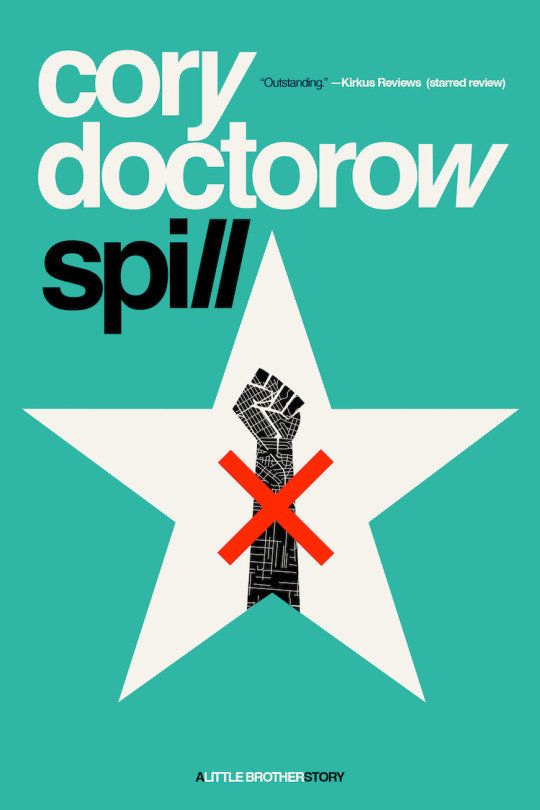

If you'd like an essay-formatted version of this post to read or share, here's a link to it on pluralistic.net, my surveillance-free, ad-free, tracker-free blog:
https://pluralistic.net/2024/09/25/epistemological-chaos/#incentives-matter

Image: Ron Cogswell (modified) https://en.wikipedia.org/wiki/File:George.Mason.University.Arlington.Campus.jpg
CC BY 2.0 https://creativecommons.org/licenses/by/2.0/
322 notes
·
View notes
Text
Stede Bonnet, Renaissance Man (Or an Exceptional Man who Thinks He’s Mediocre)
I’ve posted before about Stede’s love of beauty. He’s an aesthete, finding wonder in art and creative self-care rather than the transcendental. Stede’s a freethinker. He challenges the orthodoxies of his time, rejecting forced heteronormative behaviours, and even questioning the accepted traditions of piracy.
The thing about Stede is he often asks ‘why?’ It’s partly what makes him dangerous to some. This slant towards subversion is much of what Izzy observes and detests. It’s one of many reasons Stede must be kept from Ed. Like a number of Renaissance-style thinkers before him, Stede refuses to go along with the status quo. He is ‘doing something original’, questioning dogma. Many find it ridiculous, bizarre even. And it’s significant that instead Ed finds Stede enchanting, because it demonstrates who Ed might be given the chance to find his own path.
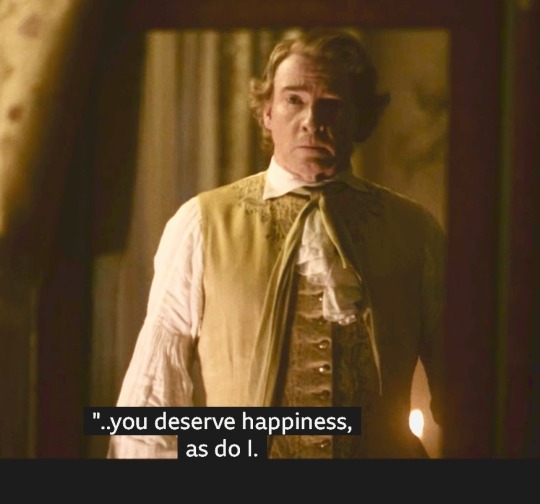
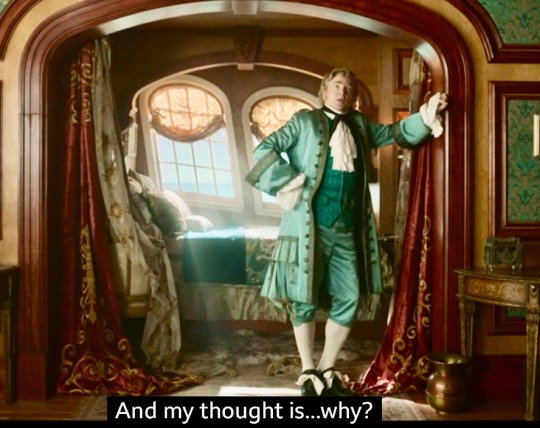
Stede is also a polymath and likely an autodidact - I doubt he learned about ‘insane foliage’ at school. He is self-motived and seems to have knowledge across a broad spectrum of disciplines. Literature, drama, botany, entomology, psychology, art, textiles. Stede’s very much about the life of the mind.
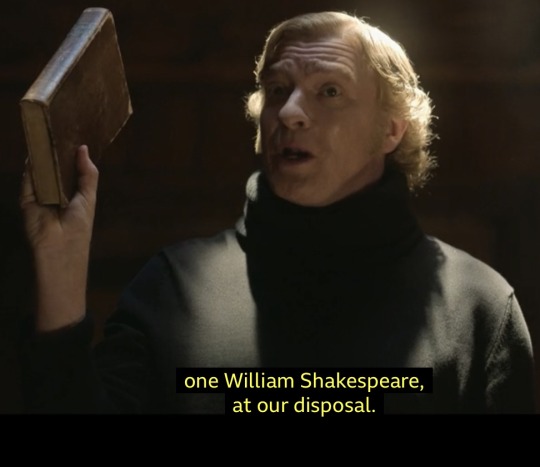
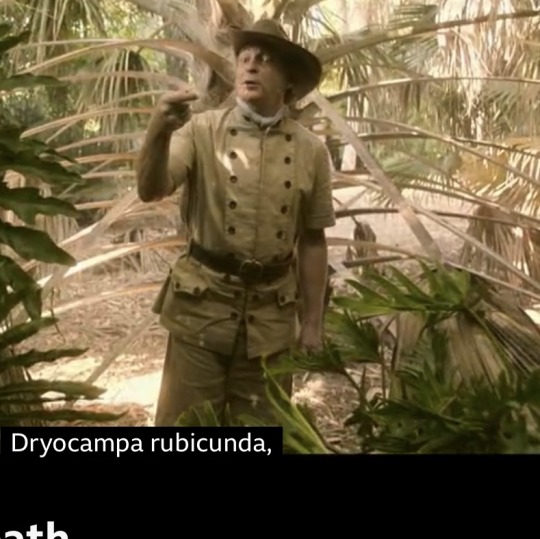
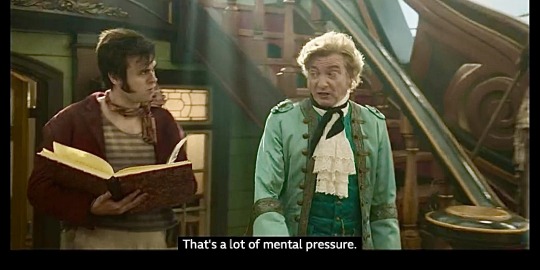
And he’ll approach areas at which he’s not so gifted, such as cartography and sword-fighting, with the enthusiasm of a dilettante; when he can’t succeed the traditional way, he simply subverts the discipline and does it his own. However, the most important thing for me in defining Stede as a Renaissance man is his humanism. People are front and centre. Sometimes that person is himself, and he loses sight of others. But it’s okay as that’s the point. Humanism is partly about being a messy individual who can do better. And Stede is someone who can learn and alter his position when circumstances change. He might not do so in the best way all of the time, but he is a quick-learner and highly-adaptable.
Stede also understands that no culture or institution is bigger than the people within it. The most important thing is human dignity - it’s what he shows and teaches Ned’s crew: that they deserve to be respected as people. Stede also has a strong moral core. When he messes up, he feels it deeply. He demonstrates strong ethics towards the natural world too - he’s absolutely disgusted by turtle vs. crab. Stede believes not so much in human superiority, but human responsibility, and this is the flip side of having dignity as a human being.
Another aspect of Stede’s humanism is his belief that culture should be accessible to all. Some of this might be naivety on Stede’s part rather than a well-thought out philosophy, but he believes in it intuitively. Stede wants the crew to have access to his library despite not recognising they can’t all read. He gives them musical instruments and sports facilities - he’s interested in what makes people flourish. And Stede practically invents art therapy!
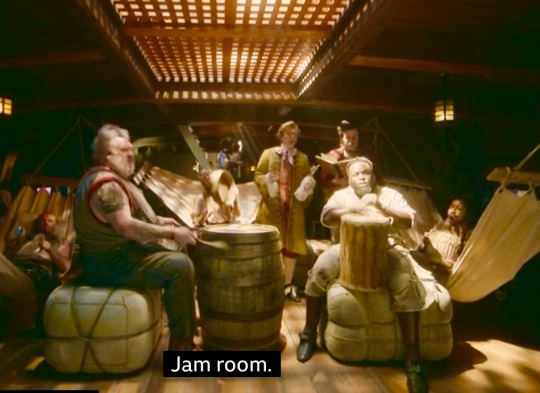
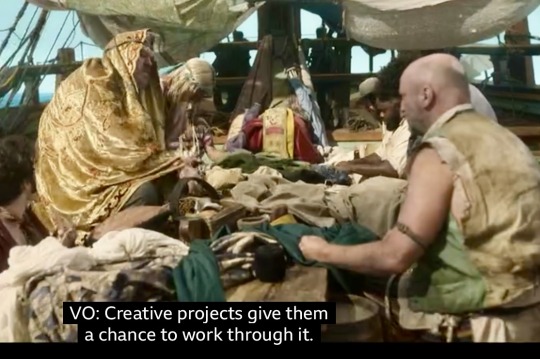
His ship is also a safe-space for human relationships to blossom - romantic, platonic, and in between. Zheng’s ship might appear to offer collective harmony, but it’s mandated and dogmatically applied. Opting out of morning tai chi for a 24-hour shagathon might be viewed as an act of dissent. No such big brother is judging you on Stede’s Revenge.
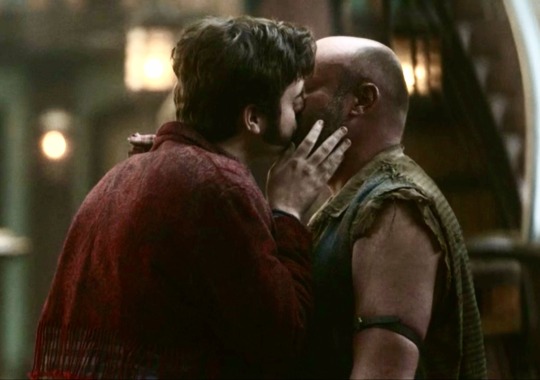
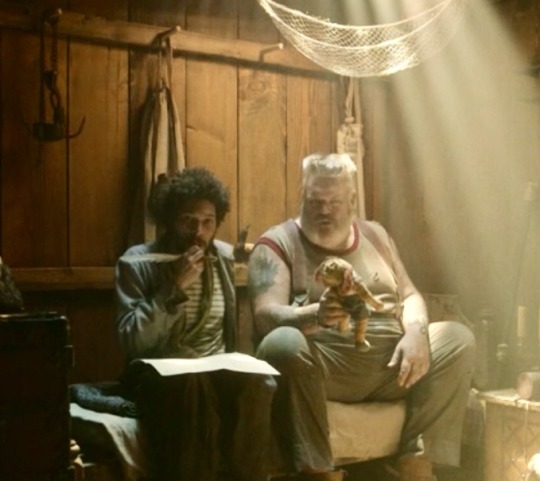
And all of this is because of the man Stede is, and the influence he has on those around him. Sometimes it falls on deaf ears. Many don’t like what Stede’s offering. Others actively rebel against it. But anyone with an ounce of goodness will get what Stede Bonnet is about and embrace it. Stede doesn’t seem to understand his own power, it comes from such an authentic place. For me, it makes him all the more endearing.
229 notes
·
View notes
Text
The Hunger Games 2023 Renaissance and Gen Z's "Bad Media Literacy"
So, not sure how it's going on other social media, but The Hunger Games – that will be referred to as THG in this little "essay" – is having a massive "renaissance" all over TikTok. And I've seen, more than once, unfortunately, people saying that Gen Z people have bad media literacy.
My issue with that is one specific argument. One about the people who have been genuinely surprised with nuances and details they didn't notice in the first they read it.
Which's such a stupid argument. Even more when, as I've seen, made by people who read the books as they came out and watched the movies as they came out. They tend to be in the younger side of the Millennials.
Do you know when Gen Zs were born? Here:

So, let's say the specific years are from 1995 up to 2013.
Here's when the trilogy was originally published;

As you see: a significant part of this generation couldn't read or wasn't even born when these books came out. That's how young this generation is.
But also, the oldest ones were between 13 and 16 as the books came out. It's unfair to expect that a 13-year-old will read THG and see the same subtext and nuances and have the same interpretation as people 18-and-above.
It's not bad media literacy that someone in their mid-to-late 20s is seeing things in a trilogy they've read ten or more years ago.
I, for example, read these books in 2013. They came out in 2010/1/2 in Brazil. I borrowed them from a classmate who had the money to buy them as they came out here. I was 15. Then got my hands on PDFs and read them in English later in the same year, I was 16. I never noticed a lot of subtext and nuances and shit when I read them ten years ago.
Both because of course I wouldn't, I was a teenager. And I read it as an escapism for some stuff. They were fun. I read the trilogy in a week – which's fast when you have school, schoolwork, almost all the home chores and the responsibility of taking care of an adult – and I wasn't looking for anything but a distraction. For a little bit of fun.
People roughly my age are seeing these videos and talks and are learning details and nuances they didn't before. It's fun, it's nice. I'm having a blast to re-read those books aware that they're more than what I thought they were back in the day.
Don't belittle people for not understand deeper and more mature topics when they didn't have the age and maturity to understand those topics.
#the hunger games#the hunger games renaissance#gen zs are not as stupid as you think they are#we were just children fifteen years ago
2K notes
·
View notes
Text
Headcanons for the Shaw Pack’s Favorite Activities at a Renaissance Fair
Last weekend, I went to my first Renaissance Fair and had a blast! So many things to do, performances to see, food to eat, and impromptu character interactions to share with actors/fair-goers. My only reasonable next step is to think about the Shaw Pack attending and enjoying a Ren Fair, too. Yes, they all dress up. (Pss- So did I! A censored Ren Fair Romi pic is below the cut. Alt txt included.)
David: Attending the blacksmith demonstration. David is fascinated by solid craftsmanship, and blacksmith work is the epitome of craft. David listens intently, learning all about the historical and cultural significance of the art-science hybrid as the blacksmith molds a blade before David’s eyes.
Angel: Dragon-egg painting. Angel leans into the fantasy elements of the fair, despite David’s grumbling that there’s nothing Renaissance about dragons. Angel meticulously paints a gorgeous dragon egg that could’ve been professionally made, all while conversing in-character with the dragon-wrangler who staffed the egg-painting station. The dragon-wrangler assures Angel that the dragon will “hatch” will grow into a majestic beast who will be loyal and loving, eternally grateful for the care they showed when the dragon was merely an egg.
Asher: The bawdy poetry reading. Asher wasn’t super thrilled to discover he read the map wrong and showed up to the bawdy poet’s performance instead of the public shaming scene, but as soon as the poet performed the first poem, he was hooked. Asher couldn’t help but laugh, not only because of the content of the poems, but because of the animated way the poet recited the words, moved about the stage, and even engaged with the audience.
Babe: Getting chosen to participate in the juggling show. The only thing that amazed Babe more than the performers juggling all sorts of objects (some dangerous, some silly) as they performed acrobatic feats was when the performers invited them on stage to “help” with their next trick of spinning plates. To their surprise and delight, Babe was able to do exactly as the juggler instructed and keep the plate spinning. They took a bow as they audience cheered, Asher screaming over everyone as he celebrated his mate.
Milo: Ringing the bell at the strongman game. The game is notoriously rigged, but Milo was up to the challenge. As soon as the bell rang out, a few character actors came over to congratulate him and decree him to the strongest man in all the village. They chanted his name and, upon hearing the commotion, the fair’s Queen made her way over to Milo to knight him as Sir Milo the Strong. She also bestowed upon him a handful of food vouchers, which Milo shared with the rest of the pack so they could all feast on all the food the fair had to offer.
Sweetheart: Watching the jousting tournament. Sweetheart loves how jousting is a blend of so many things they love: theatre, violence, and competition. They cheer as loudly as they can for the knight who fights for their section of the field, eyes glued to the combat. After the joust, even though their knight lost, they made their way to the fence to tell him he fought bravely and that he’d always be a champion in their heart. The knight was so moved by their admission, he let them pet his horse.
Darling: Watching the falconry show. Darling was in awe as the birds zipped and flew through the air, all while showing off how precise their tracking and hunting skills are. All of the birds of prey were rehabilitated rescues from the wild, which only made Darling respect and support these birds’ message of wildlife conservation and preservation even more.
Sam: Touring the dungeon museum. Sam was oddly comforted by the fact that no matter how many centuries passed, there were a few universals of humanity that transcended time. Although pain and torture were a constant obsession with humanity, Sam figured, that meant comfort and healing were, too. For as long as there had been people to inflict pain, there were people who eased pain. That thought inspires him.

#redacted asmr#redacted audio#redactedverse#redacted headcanons#redacted david#redacted davey#david shaw#redacted angel#redacted asher#redacted asher o'connell#redacted milo#redacted babe#milo greer#redacted sweetheart#redacted darlin#redacted darling#redacted sam#sam collins#redacted shaw pack#shaw pack ren fair adventure#tis i romi
101 notes
·
View notes
Note
What's OSR? I've seen you mention it several times in your RPG posts. Is it like a genre of rpg or...?
Hey, sorry I took so long to reply to this lol you probably already just googled it by now.
But like. Anyway.
OSR (Old-School Revival, Old-School Renaissance, and more uncommonly Old-School Rules or Old-School Revolution, no one can really agree on what the R means) is less like a genre and more like a movement or a loosely connected community that seeks to capture the tone, feel and/or playstyle of 70's and 80's fantasy roleplaying games (with a particular emphasis on old-school editions of Dungeons and Dragons, particularly the Basic D&D line but pretty much anything before 3e falls under this umbrella), or at least an idealized version of what people remember those games felt like to play.
There isn't exactly a consensus on what makes a game OSR but here's my personal list of things that I find to be common motifs in OSR game design and GM philosophy. Not every game in the movement features all of these things, but must certainly feature a few of them.
Rulings over rules: most OSR games lack mechanically codified rules for a lot of the actions that in modern D&D (and games influenced by it) would be covered by a skill system. Rather that try to have rules applicable for every situation, these games often have somewhat barebones rules, with the expectation that when a player tries to do something not covered by them the GM will have to make a ruling about it or negotiate a dice roll that feels fair (a common resolution system for this type of situation is d20 roll-under vs a stat that feels relevant, a d6 roll with x-in-6 chance to succeed, or just adjudicating the outcome based on how the player describes their actions)
"The solution is not on your character sheet": Related to the point above, the lack of character skills means that very few problems can be solved by saying "I roll [skill]". E.g. Looking for traps in an OSR game will look less like "I rolled 18 on my perception check" and more like "I poke the flagstones ahead with a stick to check if they're pressure plates" with maybe the GM asking for a roll or a saving throw if you do end up triggering a trap.
High lethality: Characters are squishy, and generally die much more easily. But conversely, character creation is often very quick, so if your character dies you can usually be playing again in minutes as long as there's a decent chance to integrate your new PC into the game.
Lack of emphasis on encounter balance: It's not uncommon for the PCs to find themselves way out of their depth, with encounters where they're almost guaranteed to lose unless they run away or find a creative way to stack the deck in their favor.
Combat as a failure state: Due to the two points above, not every encounter is meant to be fought, as doing so is generally not worth the risk and likely to end up badly. Players a generally better off finding ways to circumvent encounters through sneaking around them, outsmarting them, or out-maneauvering them, fighting only when there's no other option or when they've taken steps to make sure the battle is fought on their terms (e.g. luring enemies into traps or environmental hazards, stuff like that)
Emphasis on inventory and items: As skills, class features and character builds are less significant than in modern D&D (or sometimes outright nonexistent), a large part of the way the players engage with the world instead revolves around what they carry and how they use it. A lot of these games have you randomly roll your starting inventory, and often this will become as much a significant part of your character as your class is, even with seemingly useless clutter items. E.g. a hand mirror can become an invaluable tool for peeping around corners and doorways. This kind of gameplay techncially possible on modern D&D but in OSR games it's often vital.
Gold for XP: somewhat related to the above, in many of these games your XP will be determined by how much treasure you gather, casting players in the role and mindset of trasure hutners, grave robbers, etc.
Situations, not plots: This is more of a GM culture thing than an intrinsic feature of the games, but OSR campaigns will often eschew the long-form GM-authored Epic narrative that has become the norm since the late AD&D 2e era, in favor of a more sandbox-y "here's an initial situation, it's up to you what you do with it" style. This means that you probably won't be getting elaborate scenes plotted out sessions in advance to tie into your backstory and character arc, but it also means increased player agency, casting the GM in the role of less of a plot writer or narrator and more of a referee.
Like I said, these are not universal, and a lot of games that fall under the OSR umbrella will eschew some or most of these (it's very common for a lot of games to drop the gold-for-xp thing in favor of a different reawrd structure), but IMO they're a good baseline for understanding common features of the movement as a whole.
Of course, the OSR movement covers A LOT of different games, which I'd classify in the following categories by how much they deviate from their source of inspiration:
Retroclones are basically recreations of the ruleset of older D&D editions but without the D&D trademark, sometimes with a new coat of paint. E.g. OSRIC and For Gold and Glory are clones of AD&D (1e and 2e respectively); Whitebox and Fantastic Medieval Campaigns are recreations of the original 1974 white box D&D release; Old School Essentials, Basic Fantasy and Labyrinth Lord are clones of the 1981 B/X D&D set. Some of these recreate the original rules as-is, editing the text or reorganizing the information to be clearer but otherwise leaving the meachnics unchanged, while others will make slight rules changes to remove quirks that have come to be considered annoying in hindsight, some of them might mix and match features from different editions, but otherwise they're mostly straight up recreations of old-school D&D releases.
There are games that I would call "old-school compatible", that feature significant enough mechanical changes from old-school D&D to be considered a different game, but try to maintain mechanical compatibility with materials made for it. Games like The Black Hack, Knave, Macchiato Monsters, Dungeon Reavers, Whitehack, etc. play very differently from old-school D&D, and from each other, but you generally can grab any module made for any pre-3e D&D edition and run it with any of them with very little to no effort needed in conversion.
There's a third category that I wouldn't know how to call. Some people call then Nu-OSR or NSR (short for New School revolution) while a small minority of people argue that they aren't really part of the OSR movement but instead their own thing. I've personally taken to calling them "Old School Baroque". These are games that try to replicate different aspects of the tone and feel of old-school fantasy roleplaying games while borrowing few to none mechanics from them and not making any particular attempts to be mechanically compatible. Games like Into the Odd, Mörk Borg, Troika!, a dungeon game, FLEE, DURF, Songbirds, Mausritter, bastards, Cairn, Sledgehammer, and too many more to name. In my opinion this subsection of the OSR space is where it gets interesting, as there's so many different ways people try to recreate that old-school flavor with different mechanics.
(Of course, not everything fits neatly into these, e.g. I would consider stuff like Dungeon Crawl Classics to be somewhere inbetween category 1 and 2, and stuff like GloG or RELIC to be somewhere imbetween categories 2 and 3)
The OSR movement does have its ugly side, as it's to be expected by the fact that a huge part of the driving force behind it is nostalgia. Some people might be in it because it harkens back to a spirit of DIY and player agency that has been lost in traditional fantasy roleplaying games, but it's udneniable that some people are also in it because for them it harkens back to a time before "D&D went woke" when tabletop roleplaying was considered a hobby primarily for and by white men. That being said... generally those types of guys keep to themselves in their own little circlejerk, and it's pretty easy to find OSR spaces that are progressive and have a sinificant number of queer, POC, and marginalized creators.
225 notes
·
View notes
Text
Just a quick reminder of something, because I saw people talk about this on recent posts...
So, I made a TON of posts explaining why it is important to remember that the Roman gods are not the Greek gods per se - as in, the Romans had a different view and perception of the Greek gods, and so ended up creating yes, mostly equivalents and counterparts to the Greek gods, but with their own religious and cultural significance slightly different from the Greek deities - each culture having its focus on a different thing. (Aphrodite became more of a motherly and national goddess, Hermes became suddenly very merchant and commerce obsessed and not much of a thief anymore, Poseidon's rule extended to all waters not just the sea, Ares became a god of peace and agriculture?) Etc, etc.
However I now see people taking this way further than it should. I am not surprised because that's what people do on the Internet, you tell them one thing and they extrapolate it all.
But so you know, the difference between Greek and Roman gods is only valuable and interesting by the times of the Ancient Greek and Romans themselves.
When you go by the Renaissance, or by the modern eras that followed it, you'll notice that all paintings and books and sculptures are about the Roman gods - Jupiter, Juno, Neptune, Venus, Mercury, Vulcan and whatnot. Does it mean they are about the Roman gods? NOT AT ALL! They're all about the Greek gods mainly, but mixed with some Roman elements.
That's something some people are apparetly not aware of, so I'll try to briefly summarize it for ya... By the Middle-Ages, people knew of what we call today the "Classical mythology" mostly and mainly through the Roman texts and authors. Later by the Renaissance some of the Greek texts and authors were rediscovered, shared around and used a lot - not all though, as the rediscovery of Ancient Greece would be slow and steady, and we still find new fragments of Greek texts today! But here's the gist: the Roman texts and legends having been there before the Greek ones in people's cultures and heads... By the Renaissance and forward, the Roman names of the gods were the one used by default. For them these names were the famous and recognizable ones, and almost the "truest" of their names... Even when depicting entirely Greek myths and legends.
Because that's the subtle trick of Renaissance and all that would follow: the Greek texts and legends being THE big piece everybody was talking about and discussing about, the gods depicted in the arts and fiction by these eras were mostly and mainly their Greek versions. But, due to the "I was here first" and pre-eminence of the Roman literature and culture in Europe, these Greek identites and personas of the gods were refered to by their Roman names, and the Greek myths coexisted with the Roman legends. And that's the whole point: throughout the history of modern Europe, the difference between Roman and Greek god does not matter because they were conflated and unified into one and same set of entity, and people didn't care about the difference.
Which is what led to today's belief that "Roman gods are just the Greek gods by a different name" - and also led to stuff like this horrible thing I experienced as a teenager when the teacher supposed to teach us about Latin, when talking about the Roman gods, just handed to us a description of the Greek gods and told us to just swap the Greek names with the Roman ones (this teacher was an AWFUL awful teacher, not mean, but very bad at her job).
Because yes, that's the irony: you'd think that because people were more familiar with Roman mythology and the Romans personas of the gods during the Middle-Ages and the Renaissance, the Roman gods would have overshadowed the Greek ones, but in effect that's the reverse. The Roman gods being erased by the Greek gods: which is why people still think today Mars is a bloodthirsty war god, or that Minerva has all the attributes of Athena, or that Mercury was just as much a god of thieves as of legal business. The main problem today isn't to highlight the purely Greek things - because the Ancient Greeks have won this historical battle. The problem is pointing out how the Roman gods had their own unique thing on the aside that the Greek gods did not.
In conclusion: yes, you can use paintings of Jupiter to illustrate an article about Zeus, because at the time they were made, the artist probably was thinking about Zeus but just used a different name.
#it might sound complicated#but really it is so simple#the roman gods are not the greeks gods#yet the roman gods *became* the greek gods through time#greek mythology#greek gods#roman gods#roman mythology
57 notes
·
View notes
Text
The Justice Society of America vs. the Justice League
This is the first half of the massive post I've been working on, which I've decided to cut in half; part two will be more focused on what the Justice League looks like when the story actually starts in 2004, like membership and different teams within the Justice League, like the Justice Foundation and Justice League Dark.
But for now, enjoy the backstory!
During World War II, Adolf Hitler was interested in supernatural artifacts, ultimately finding the Spear of Destiny around 1940. President Roosevelt called on several superheroes to help defend the USA, as most local superheroes of the time tried to stay out of international conflicts to focus on their own territories. After this initial mission is complete, the group of heroes decide to remain as a team, funded and directed by the United States government, called the Justice Society of America. Founding members were Flash (Jay Garrick), Green Lantern (Alan Scott), Doctor Fate (Kent Nelson), Atom (Al Pratt), Hawkman (Carter Hall), Hourman (Rex Tyler), and Spectre (Jim Corrigan). Several heroes joined shortly after, including Hawkman’s girlfriend/wife Hawkgirl/Hawkwoman (Shiera Sanders/Shiera Hall), Johnny Thunderbolt (John Thunder) with Yz the Thunderbolt, Doctor Mid-Nite (Charles McNider), Starman (Ted Knight), among others. I’m also adding several “older” versions of heroes who might not have originally been associated with the JSA but have more “modern” variants that will be part of the eventual Justice League.
People with superhuman abilities have always existed, one of the earliest being Vandal Savage, but they mostly did one of three things; 1] they swore fealty to a local ruler and worked within an existing system (Alucard, though against his will); 2] they became a local ruler and created their own system (King Arthur); or 3] they worked outside existing systems as a vigilante, usually guided by their own internal moral compass (Robin Hood). These super powered individuals would often be drawn to each other, as allies or enemies, but most would remain local to a specific territory; or if they didn’t have a particular area, they would travel and help whoever happened to be around them at a given time. During the Renaissance, power and authority was more centralized, formalized, and structured, forcing super powered individuals to either fall in line with these systems or sink further into the shadows, becoming “mystery men” as a way to protect themselves and their loved ones. These mystery men were often vilified for not bowing to the government’s will, which led to more secrecy, which led to mistrust from the public, which led to more secrecy, in an ever darkening spiral.
The Justice Society of America is significant because it marked a change in the perception the general public had for these “superheroes” as the JSA preferred to call them. They were no longer mysterious boogey-men to scare kids straight; they were just people, who lived and loved and bought groceries just like anyone else, and who wanted to help others in any way they could. As the globalization of human culture increased through the rest of the 1900s, so too did the influence of superheroes; some thrived on the attention and political power their celebrity status granted them, while others shied away from the spotlight they’d been thrust into, not prepared for the nightmare that is Public Relations.
Over the next few decades, as the idea of superheroes became more mainstream, more local heroes began popping up, as well as some established local heroes releasing their stranglehold on some of their secrets; not all, but enough to humanize themselves to the general public. The idea of public adoration appealed to many, like moths to a flame, which unfortunately tended to draw the wrong crowd for the wrong reasons, saturating the “superhero market” with selfish so-called heroes who only cared about themselves rather than helping people if no one was around to praise them for it. Thankfully, these heroes didn’t last long and folded when faced with an actual threat, which often ended in public humiliation; people were finally starting to catch on to this trend by the 1970s, leading to newer heroes thinking twice before donning a cape and mask.
Three tiers of membership developed within the JSA; full members, part-time members or associates, and non-members that have been endorsed by the JSA who might become members in the future. Of course a more nuanced hierarchy developed over time, as is common among groups of humans, which was loosely based around these tiers but there were always outliers who had more or less respect than their membership status would otherwise grant them. While some were drawn to the JSA for the fame, just an endorsement could make or break a local hero; legitimizing their status as a hero in the publics’ eyes, access to better equipment and training, and, most importantly, access to medical treatment that the government would pay for and an implicit understanding about secret identities from all hospital staff. There were pros and cons for each tier; higher membership meant more responsibility but also more compensation, while lower membership offered more freedom but less access to resources. For example, members were paid based on their time, effort, and how much danger they were put in, but they had no choice but to answer the call to action. Those with just an endorsement weren’t paid at all and had limited access to other resources, but they were allowed to keep their identities a secret from the JSA, which even part-time members had to reveal, though not to the public if they didn’t want to.
Superman was inducted into the JSA fairly quickly after his debut, joining in 1978. The JSA had been around for almost 4 decades by then and its flaws and shortcomings were becoming more and more apparent; while most up-and-coming heroes had grown up with the idea of superheroes being necessary for public safety, the JSA had become increasingly political, rife with in-fighting, and interconnected with the US military. They’d become the USA’s attack dogs internationally and tended to attract those who craved the spotlight via membership more than those who actually wanted to help people, who often stayed at endorsement level. They were getting desperate for new members that could revitalize their image, which inevitably either corrupted the young heroes or disgusted them into leaving.
Trained as a reporter for his day job, Superman quickly uncovered the truth but recognized that the JSA had good bones and structure, despite its corruption. He initially tried to change things from within but realized the corruption and codependence ran too deep. Instead, he began studying the structure of the JSA, figuring out what it did well and how to avoid what it did wrong, all while making plans for his own superhero team, independent of government meddling, and international in scope; if nothing else, it could help superhero teams coordinate with each other as a neutral third party mediator.
Superman wasn’t quiet about the JSA’s shortcomings, but kept his plans for the Justice League mostly to himself; he didn’t want to be kicked out for potentially poaching talent as a competitor, not while he still needed the JSA’s resources to help people. In 1986, Superman approached newly minted CEO Bruce Wayne with his idea; he knew Batman had been approached to join the JSA but had declined and hoped that, despite their rough introduction a few years prior, Wayne Enterprise would agree to be the Justice League’s financial backer, affording them greater independence from any government interference. Bruce had a lot going on at the time and said he’d think about it.
Somewhere around 1990, Wonder Woman debuted and hesitantly joined the JSA, recognizing the corruption (not to mention misogyny) but also its usefulness to her, and was quickly approached by Superman with his new team idea. She was much more comfortable with his plan and eagerly jumped on board, agreeing to be its main leader, but until they could make it happen, she worked on establishing herself as someone the public could trust.
By 1993, Dick Greyson had graduated from sidekick Robin to independent hero Nightwing, Barbra Gordan had well established herself as Batgirl, and Jason Todd was doing well as the second Robin. Feeling more stable, Bruce asked if Clark was still serious about his idea, which he’d now had 7 more years to refine and recruit for. The Justice League finally debuted the next year, lead mostly by Wonder Woman and backed by Superman and Batman as joint seconds-in-command; they purposely never established which of the two had a higher rank and delegated the responsibilities evenly between them based on their strengths. Superman took more of front-facing role with Wonder Woman, as both were generally good with Public Relations, while Batman took on more of a supporting role, doing a lot of the background planning and coordinating to maximize efficiency. Some would compare them to the three arms of the US government, with Wonder Woman as the executive, Superman as the judicial, and Batman as the legislative. While not intentional, it helped people understand their roles and division of power so they didn’t do anything to confirm or deny the parallels.
Their initial lineup consisted of Wonder Woman, Superman, and Batman, along with Flash (Barry Allen), Green Lantern (Hal Jordan), Aquaman (Orin/Arthur Curry), and Martian Manhunter (J’onn J’onzz). After the League proved to be stable and not likely to disband, like most independent superhero teams did, they quickly gained members, especially younger heroes that wanted to change the world without being shackled to a specific government and hamstrung by their politics. Many members also joined as a representative of local superhero teams/government agencies around the world.
#non undertale#danny phantom#dpxdc#phandom#phantom bat#Justice League#Justice Society of America#mystery men#quick bio#public relations#how do I even tag this shit#evolution of superhero teams
31 notes
·
View notes
Text
ignore this post if you're tired of reading anything abt transphobes complaining about trans ppl (and top surgery scars) in dragon age, but:
David Gaider, the creator of the Dragon Age setting and veteran writer at BioWare (no longer working there, he didn't write for DATV), has given some reasoning as to why top surgery scars can be justified in the world of Thedas. Here are his posts:


"You want this to be about the top scars? OK, let's go. 1) There's no evidence that shapeshifting can selectively, and permanently, alter body parts. Even if it could, shapeshifters can only alter themselves. Morrigan cannot turn other people into spiders." "2) Even if other magic could alter body parts permanently, and there's no evidence this is the case, not everyone has access to it. One cannot walk into a Circle of Magi and go "remove boobs plz"." "3) If your issue is "why not heal?", healing magic also does not do everything. Scars exist. Why does Cassandra have a scar on her chin? If anyone could go "heal scar plz", it'd be her. Recognize there's a difference between the way it works in gameplay and lore, with healing as many other things." "4) If your issue is "how surgery exist?", you're probably looking at our own medieval world. Thedas is, at best, quasi-medieval. There are SO MANY instances of things that, in our world, didn't exist until the Renaissance or even later. It's not our medieval world and never tried to be." "But it's not about the top scars, is it? You've been presented with new information and you just don't like it. You don't want it. Like anyone who balked at the qunari change in DA2. So you try to make it about inconsistency because you feel that's stronger than this just being about YOUR biases."
source: [1], [2], [3], [4], [5]
I know that if you're pro-trans (or just normal) you understand all of this, but still. This is literally coming from the person who created Dragon Age. He defends the existence of both top surgery and its scars with a watsonian reasoning. At least this in-world explanation might be valuable for some people. That such a significant person behind Dragon Age justifies to you directly why this decision can make sense in such a world. And even from a POV that's pro-trans, it's cool to hear the in-world reasoning from someone that knows the setting better than anyone.
Overall I'm glad he's openly defending it because even if it's logical it's also nice that he speaks about it when he doesn't have to, especially since he's not involved in this project anymore. Idk if all of them, but it's nice to see that the devs are overall so trans-friendly. And nicer to see that there are trans devs to start with involved in the game.
And this whole thing is bigger than it should be, but the reality that not only people are still transphobic, but most big games simply don't have top surgery scars at all. Some have trans options, but they're still incredibly binary and restrictive, like BG3 and Cyberpunk 2077 (I like both of those games a lot, but being able to give a very stereotypically masculine character a vulva and vice-versa, or even worse, having that situation but the character's voice be directly related to pronouns, is not good enough. It shows a lack of care and understanding of trans people. And in BG3's case at least you can independently change voice and also go by they/them, but even then. Overall, it's good that those games went in that direction and that you could in that way be trans at all, but it was still not good at all. It was like saying "you are allowed to be trans, but only in this very passing, gender-conforming way and binary way." I feel like in this case, DATV's approach is one of the best I can think of so far, so in that sense I'm grateful (and apparently you can also say in the game that you're trans, which if that's true, that's great.) And this doesn't mean that the CC couldn't be better and more inclusive in a lot of other ways, but this is decent at least for trans characters.
So anyway, it's nice to have top surgery scars in CC. I hope at some point trans people will stop being targeted in this way and that it can be just something that's in the overwhelming majority of games, and done respectfully, and that people just leave us alone. Also wishing the same for POC, women, and people with any condition they decide is woke like... having vitiligo I guess.
#im also pretty sure we'll see more than once trans npc in the game so. i wonder if they'll even realize. be ready just in case.#cw transphobia#dragon age discourse#dragon age#dragon age the veilguard#dragon age: the veilguard#datv#dav#da4#datv cc#character creator#the veilguard#da veilguard#veilguard#trans#transgender#top surgery
48 notes
·
View notes
Text
penelope (or how the odyssey was really written)
the title do be giving ao3 lol. wasnt at all what i was expecting! had me cackling in places & clutching my pearls in others XD
being only 23 songs its pretty quick paced and gives you mere glimpses into penelopes perspective more than anything, but all in all very groovy and enjoyable (thoughts below and ofc spoilers lol)
love the prologue! stronk start :]
prayed very hard this wasnt going to take the direction i thought it was and it didnt thank god.
BARBERSHOP QUARTET SUITORS SENT MEEEEEE
its so funny omg, same vibes as the tavern folk from rapunzel :D
gagged a little tho theyre very delulu, almost as bad as paris lol
shes gonna be miiiiiiiiiiiiiine
the note pen hits at: not this hero that i dont know made me *ascend* (theres a point or two btw where it gets a little suggestive)
WHO TF IS DAPHNE
me @ antinuous: sang it girlfriend!!!!!! giggling so hard wtf
simba walked so antinuos could run fr, when im king is a bop lol
NOT THE ANTICLEA JUMPSCARE :')))))
telemachus being eager to smash the skulls of the suitors fearing the sight of blood above all is so funny to me. poor tele XD
it took me 8 songs to realise that this was a somewhat modern setting lol, selfie with the oracle of delphi caught me so off guard
THE ODY AND TELE BONDING WE ALL DESERVED!!!!
hilarious actually really enjoyed their dynamic (we need a plan)
ody had it coming to him. get his ass penelope
a cappella suitors have my heart lol
NOT THE BEE GEES REFERENCE AHAHAH
greek tragedy joke was a little on the nose lol
i love love love the idea that penelope just swam off (naiad muffin hell yeah) and ody swam after her, which if u take into consideration the trauma of 10 years at sea its a pretty significant gesture i think
LAST NOTE IS MAJESTIC AAAAAAAA
--
idk its a very interesting twist on the narration and in all fairness far too short to really flesh anyone out, but for a penelope centric musical i was expecting something something a little more?
went to look the musical up and read a little more about it and found this gem. forget everything i said this renaissance painting suffices:

THE EMO, THE GIRLYPOP, ANTICLEA JUMPSCARE II. ITS PERFECT
--
oh and also tiresias ate and left no crumbs lmao, all i could think of was a cover is not the book- esque performance so i had to draw it lol (sorry its awful)


its the letter from hell song, at 03:20 . do yall see the vision?

bonus emo tiresias, hes supposed to be wearing pomegrante themed accessories idk how obvious that is lol. eh enjoy :D
#the suggestiveness is mainly im not sure i remember how (song 21) for anyone who wants to skip :)#theres a moment or two sprinkled throughout as well. nothing graphic tho#penelope#penelope of ithaca#penelope the musical#i need to go back to work omg im so behind#i just had to inform the masses of this gem#not at all procrastinating. 👀#come get yall juice#lol#greek mythology#still dont know who tf is daphne#my art#tiresias#anticlea
44 notes
·
View notes
Text
Long-necked herbivorous dinosaurs are known as sauropodomorphs. They were a group of mainly bipedal dinosaurs that lived some 210 million years ago in the Late Triassic. Kimberley (Kimi) Chapelle, assistant professor in the anatomical sciences department in the Renaissance School of Medicine at Stony Brook University, is part of the international team of scientists that discovered and identified the find, named Musankwa sanyatiensis. The discovery of Musankwa sanyatiensis is particularly significant as it is the first dinosaur to be named from the Mid-Zambezi Basin of northern Zimbabwe in more than 50 years. The fossil follows only these previous dinosaur discoveries in the region: Syntarsus rhodesiensis in 1969, Vulcanodon karibaensis in 1972, and Mbiresaurus raathi in 2022.
Continue Reading.
78 notes
·
View notes
Photo
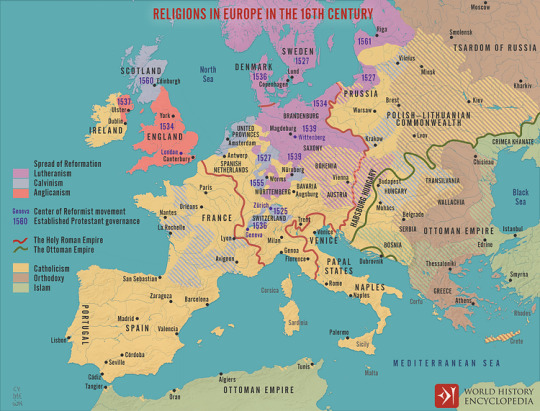
Protestant Reformation
The Protestant Reformation (1517-1648) refers to the widespread religious, cultural, and social upheaval of 16th-century Europe that broke the hold of the medieval Church, allowing for the development of personal interpretations of the Christian message and leading to the development of modern nation-states. It is considered one of the most important events in Western history.
The dates of the Reformation are not universally agreed upon. Some scholars date the event 1400-1750 (from the dissent of Jan Hus to the end of the pre-industrial society), while others suggest 1517-1685 (from the dissent of Martin Luther to the revocation of the Edict of Nantes), and there are many other claims regarding dating which have equal merit. The dates 1517-1648, however, are the most widely accepted, setting the beginning of the Reformation at Martin Luther's dissent and the end at the Treaty of Westphalia that concluded the Thirty Years' War which started as a dispute between Catholics and Protestants.
Although the Reformation was previously understood as a monolithic event, current scholarship interprets it more as Protestant Reformations, a series of protests against the corruption of the medieval Church, seeking reform and, initially, the leaders of these protests had no intention of breaking away from the Church. A prime example of this is the Bohemian Reformation (c. 1380 - c. 1436), precursor to the Protestant Reformation, which initially only sought to remedy unbiblical practices by the Church.
By the 15th century, corruption in the Church was widespread and devout believers sought to rectify this. The refusal of the Church to address these criticisms eventually led to the schisms that would establish Protestant Christian sects which developed into denominations such as Lutheranism, Calvinism, Anglicanism, and others.
The Protestant Reformation completely changed the European cultural, religious, social, and political landscape and is often referred to as the birth of the modern age as it coincided with and was encouraged by the Renaissance of the 15th-16th centuries. Although there were earlier movements in response to the corruption of the Church, modern technology in the form of the printing press allowed for the dissemination of protestant literature and the publication of the Bible in the vernacular, resulting in widespread support for the cause and the end of the monolithic religious, cultural, and political authority of the Church.
The Medieval Church
The Church dominated medieval Europe (c. 476-1500) as the sole authority on spiritual matters and, as it became more powerful, influenced the spheres of politics and culture. In time, the pope became a significant political presence and, generally speaking, spent more time and effort on worldly affairs than religious matters. The hierarchy of the Church – pope, cardinals, bishops/archbishops, priests, and those in monastic orders – began to exercise their authority more for their own personal gain and comfort than the spiritual well-being of the people.
The Bible was only available in Latin – which laypeople could not read – and the Christian Mass was also recited in Latin as were the prayers (such as the Our Father and Hail Mary) taught to the people. Although the Church mandated adherence to its vision of Jesus Christ's message, this did not resonate with many laypeople who practiced a kind of blend of Christianity with pagan folk belief. The inaccessibility of church teachings, coupled with the obvious display of luxury and comfort by the clergy, led to reform movements as early as the 7th century, and according to some interpretations, even earlier.
Continue reading...
24 notes
·
View notes